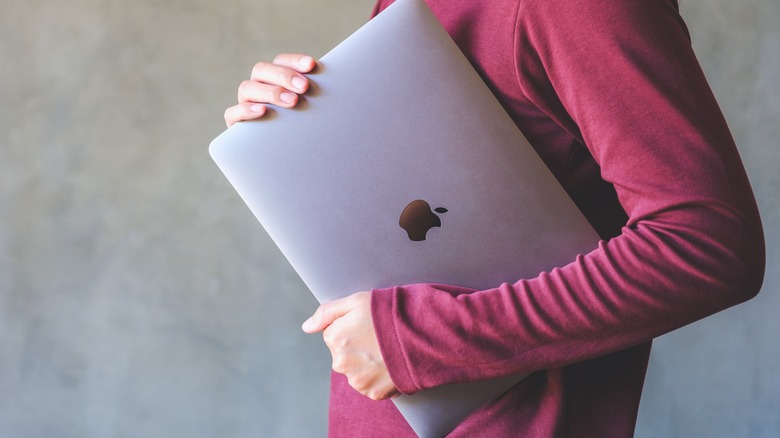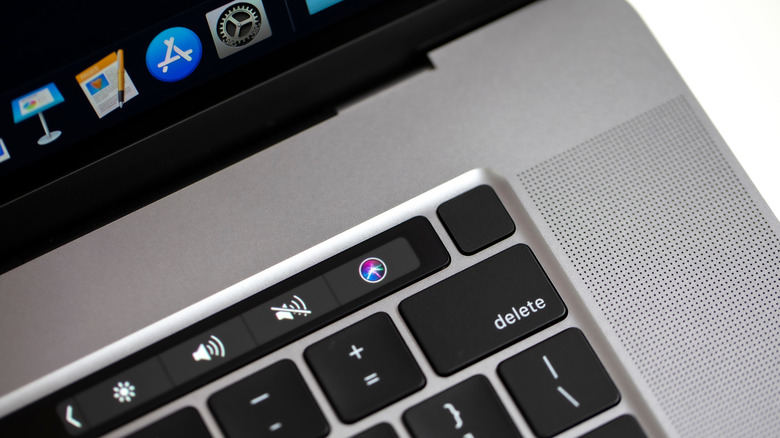The Secret Photos Feature That Makes Your Hidden And Recently Deleted Photos More Secure
If you've recently upgraded your Mac computer to run on macOS Ventura, then you've probably come across several new features you didn't know you needed. One of the most highly anticipated features is the Continuity Camera, which gives you the added ability to employ an iPhone's powerful camera features as a wired or wireless webcam that you can hook up to your computer for your video group calls. Another useful feature is being able to use live captions for most audio and visual content accessed on a Mac computer. While a lot of MacOS Ventura's more talked-about enhancements have to do with making the user experience on stock Apple apps a more seamless, several upgrades are centered on improving the operating system — as well as its many apps — in terms of overall privacy and security.
For instance, Safari is now incorporated with a strong password recommendation mechanism that ensures you secure your accounts on various websites by using virtually uncrackable strings of characters according to each platform's password specifications. Those who like using the Notes app on their computer will now be able to use their computer login password or create a custom one to lock and protect notes from prying eyes. Similarly, Photos has a pretty valuable security feature for certain albums withn the app that you may want to look into.
You can now password-protect albums in the Photos app
Much like with Notes, you can now set passwords for the Hidden and Recently Deleted albums in Photos and keep them locked and secure. This MacOS Ventura feature is enabled by default. You would be required to key in your Mac computer's login password or use Touch ID to gain access to either of the two albums.
This is especially useful for people who regularly transfer photos into a secret space within the Photos app so that other people who may have access to the machine won't be able to snoop and view private shots that easily. You can keep photos from being displayed in your library by following these steps:
- Launch the Photos app.
- From the sidebar, hit "Library."
- Pick the photo or group of photos you'd like to conceal.
- Choose "Image" from the menu bar that runs along the top of the computer screen, then hit "Hide [number] Photos."
- Click "Hide" to finalize.
Marked photos will then be moved into the "Hidden" photos folder, which can be accessed by going to "Library" again in the sidebar and hitting "View" from the menu bar in order to "Show Hidden Photo Album." Since the password-lock feature is automatically turned on for the secret folder on MacOS Ventura, you may be required to enter your login password or use Touch ID (if you have it set up) to display hidden photos again.
In addition to hidden photos being password protected, other users who hop on your Mac computer will not be able to just check out or recover any newly deleted photos. Photos that were moved into the Recently Deleted album can be restored and moved back into the main Photos library within the period of time stated for each file.
Where to find the Photos app's password-protect switch
If for some reason Photos is letting you see the Hidden and Recently Deleted folders without a password or Touch ID prompt, then you can manually check and ensure that the feature is enabled within the app's settings. Here's how:
- With the Photos app open, pick "Photos" from the top menu bar, then go to "Settings."
- Navigate to the "General" tab.
- Next to "Privacy," make sure the box for "Use Touch ID or password" is checked.
When the feature is switched on, you will need to either type your Mac computer's login password or use Touch ID. You won't be able to set a custom password the way you can for notes in the Notes app. You can disable passwords for the aforementioned albums at any time by following the same steps listed above. However, for security reasons, it is not recommended that you turn this feature off. If you happen to own an iPhone and recently updated to iOS 16, the same functionality should also be available and turned on by default for the Photos app.


